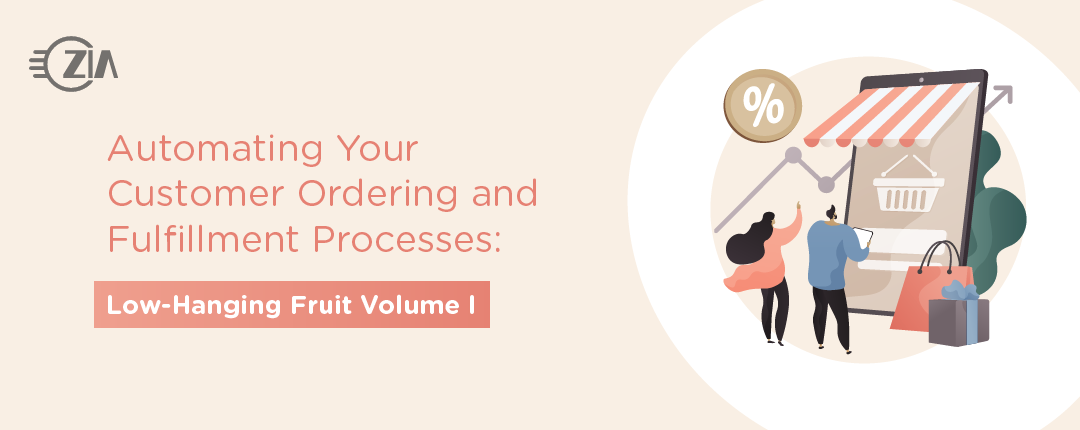Automation and Hyperautomation
More and more, customers and prospective clients are interested in automation or hyperautomation. In fact, when we talk about technology specific strategic initiatives, it has become the number one priority. They share that companies are accelerating their digital transformation efforts by as much as five years to deal with the changes in commerce and the global workspace brought on by the COVID-19 pandemic. While automation is still a popular business concept that is over one hundred years old, hyperautomation is a term that was coined only recently by Gartner in 2019. It is used to better describe the strategies and technologies that companies deploy to automate their businesses. These companies understand that automation is critical in order to be disruptive in their space, or to protect their market share from “born digital” competitors.
Understanding the Importance of Being Disruptive
Prior to COVID-19, the decision to automate or digitally transform was usually centered around a strict ROI. Companies evaluated full-time equivalent (FTE) time spent on manual processes and potential savings against the cost of deploying technology. This is no longer the case. Disruptive companies realize that automation is essential to survival and employee retention. A lot more consideration is being given to soft ROI and the difficulty in measuring returns, such as improved customer satisfaction, increased employee engagement, and the ability to collect and mine data for the future. Surprisingly, there are a number of customers that still use a type of form (i.e., paper or PDF) and highly manual processes to intake customer order information or fulfill orders. In this blog, I am going to share a few strategies for companies that are looking to automate their customer ordering and fulfillment processes. They can start with attacking low-hanging fruit and realizing quick initial wins within their company.
The Six Practices of Digital Transformation
Zia Consulting has identified the “Six Components of Digital Transformation.” 
These best practices are not step-by-step instructions, and are often tackled in parallel or in an order that fits the needs of the organization. In this blog series, I will focus on digitizing core organizational processes, automating business processes, and automating compliance and governance to bring hyperautomation—or at the very least, better automation to your customer order and fulfillment process. The first area of focus is digitizing core organizational processes.
Digitizing Core Organizational Processes
I believe that the lowest hanging fruit is developing a practice where you teach your employees to react to paper and manual data entry as if they are allergic. In a perfect world, all companies would adopt a completely digitized ordering and fulfillment process. I know that this is not reality and many companies are still using paper forms. I have heard every reason they haven’t made the shift…things like, “our customers are not the kind that are comfortable with technology.”

“Our processes are so complicated that paper has to flow throughout our company.” “It is too expensive to digitize.” “We rely on government or industry forms that are not digitized.” I could go on and on, but you get the point. While I agree it may not be practical to eliminate the need for paper/PDFs forms, there is absolutely nothing preventing your organization from automating how these forms are processed within your organization. Removing paper processes and mind numbing data entry tasks will help you build a solid foundation for future hyperautomation construction efforts. Robotic process automation (RPA) has not been wholly successful, and I believe the reason is that it lacks digitized core processes. Garbage in equals garbage out when it comes to RPA.
Automation and Hyperautomation in the Mortgage Industry
The mortgage industry is arguably one of the most paper-intensive industries in existence, and a good example of the type of business we help often help automate their processes. It is daunting to think about the variety of paper forms that are required to process a loan. There are well over 350 possible forms associated with the processing of a loan. Manually gathering information from loan packages has been historically labor-intensive. Five years ago, a seasoned veteran of the mortgage industry would not believe they could eliminate the manual processes associated with taking a loan package, identifying the types of forms within the loan package, and extracting the relevant information from those forms. They probably would have laughed at you. By leveraging intelligent document capture technology, Zia is able to ingest and digitize your paper processes in a way that will allow you to identify the form, extract relevant information from the form, and export the information to your business systems with minimal or no human intervention. We currently help our mortgage customers bring levels of automation to over 300 types of pre-trained forms.
Zia works in multiple industries to eliminate manual paper processes in every step of the ordering and fulfillment process. Check out some of our recorded webinars, case studies, white papers, and blogs that directly relate to intelligent document capture and the automation of streamlining paper processes.
The follow-up blog will outline two additional low-hanging fruits for hyperautomation: (1) leveraging low-code, no-code workflows, and (2) automating compliance and governance by utilizing an easy-to-deploy digital automation platform—ASG-Zenith and Zia’s Privacy Aware Governance solution. As always, feel free to reach out to us anytime if you have additional thoughts or questions.

